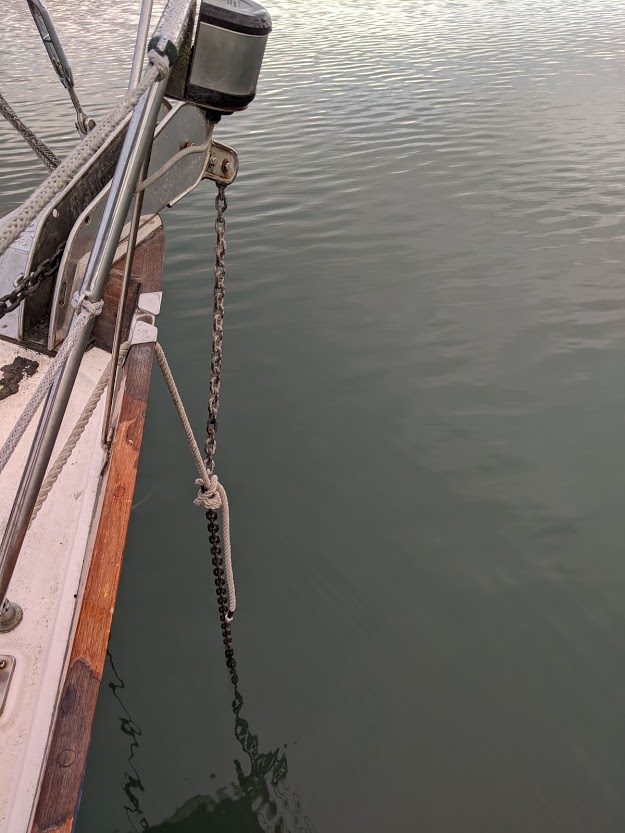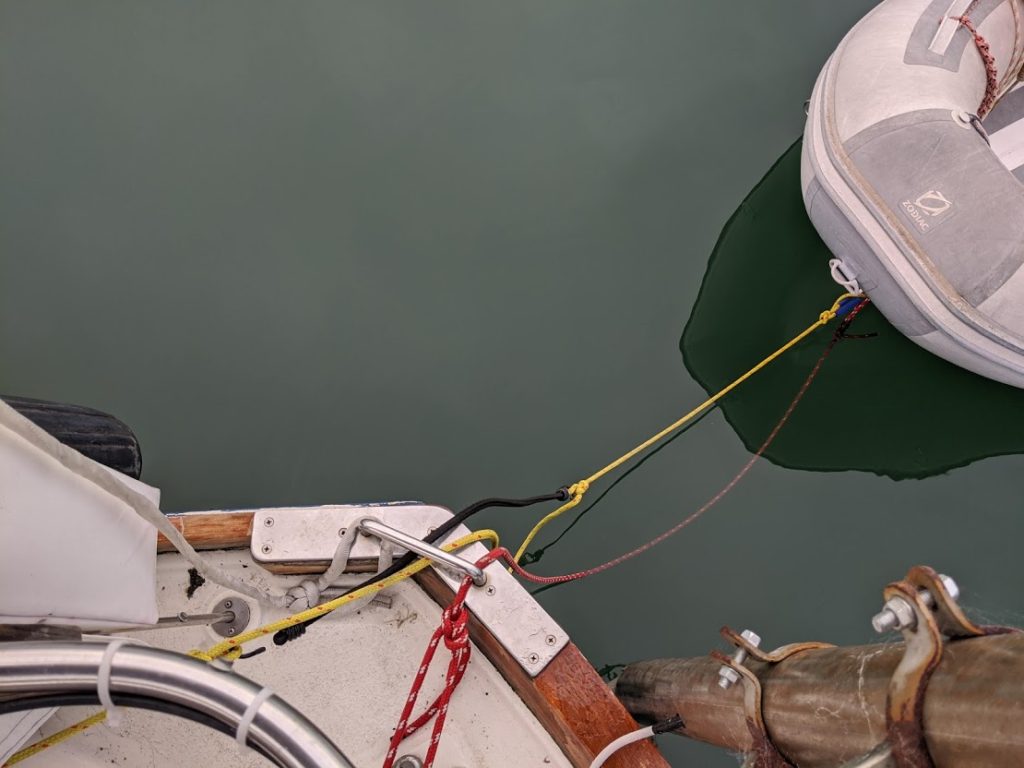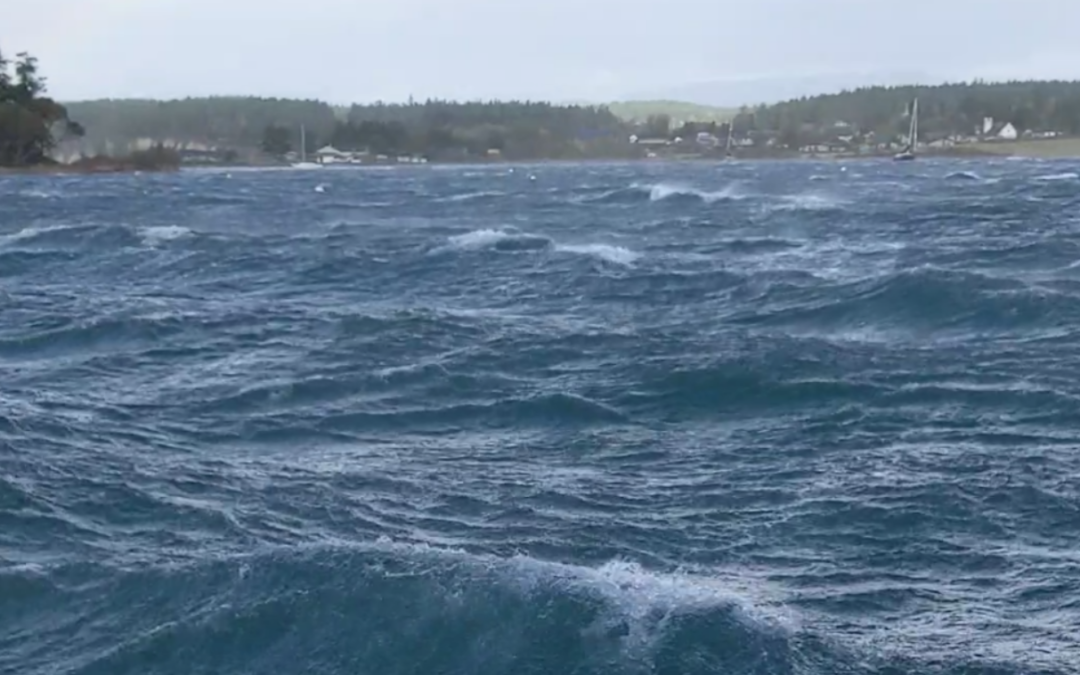Yesterday was, wholly, the worst day we’ve ever spent aboard our sailboat, Mosaic. We’ve been living aboard for over 4 years now and cruising the waters of the Puget Sound since May of 2019. We’ve been through four Pacific Northwest winters in our tiny space. We’ve seen some storms. But never before anything like what we went through yesterday.
It’s October and we’re still cruising the San Juan Islands, as we have been since July. The weather has been starting to turn toward rain and windstorms and we’re ready to head south for the winter.
Lulled into a False Sense of Security
For the past week, we’ve had storm front after storm front come through while we rode it out at anchor in Fisherman’s Bay on Lopez Island. Each time, the winds turned out to be lesser than predicted and we grew more comfortable. We allowed this to lull us into a false sense of security and though we were watching the wind predictions carefully, we decided not to spend the money and go into a marina. This turned out to be a big mistake.
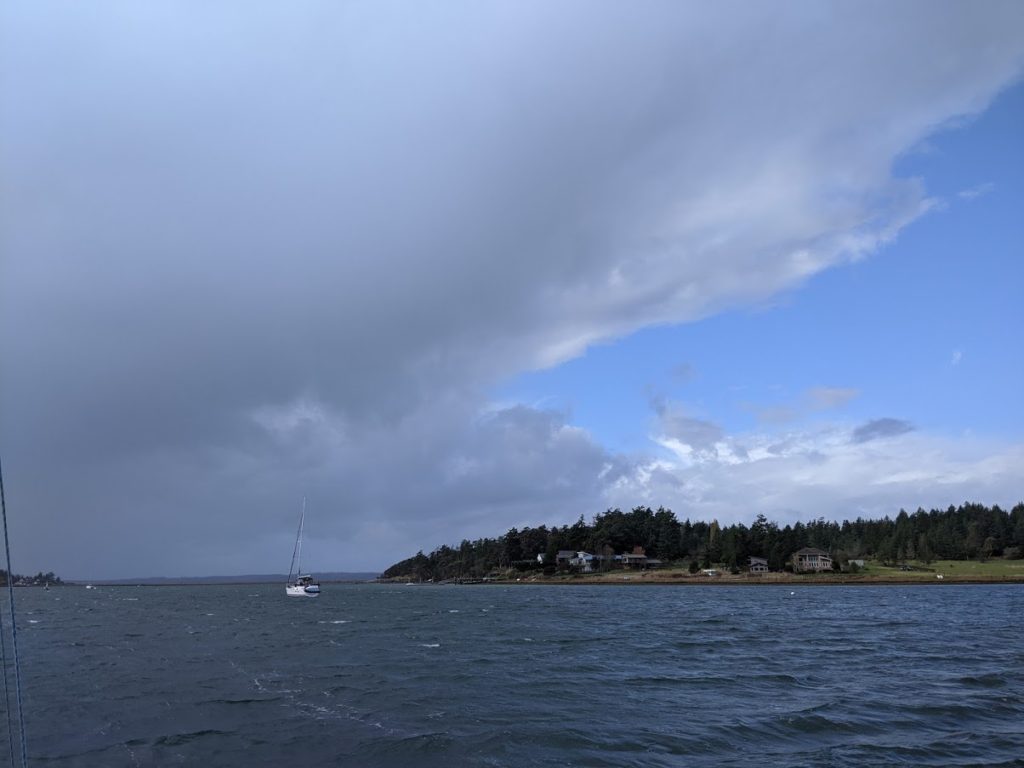
Prior to yesterday, I think that the biggest wind we’d seen at anchor registered 31 knots on our wind instruments. On the night before the storm, the wind predictions topped out at gusts to 32 knots. The morning of the storm, they’d increased the predictions to gusts to 38 knots.
By noon, I was already wishing that we’d taken the opportunity earlier to move to Friday Harbor and take shelter at the protected marina there. We were already seeing gusts into the mid-30s and I had already decided that this was not anything I ever want to do again. I could have learned my lesson at that, but we were still in for so much more.
I watched in dismay as several boats pulled anchor and decided to head into the marina here in Fisherman’s Bay but neither of us wanted to follow. The thought of trying to dock the boat in 30-40 knot gusts was not something I wanted to experience, and watching the army of people on the docks try to help those boats get settled reinforced our decision. It was not pretty. No – We were committed now to riding it out right where we were. We just had to hold on. And pray to the gods that our boat would bring us through it.
At the peak yesterday, our wind instruments read a gust at 49 knots. FORTY-NINE KNOTS!
That’s 55 mph for you land-lubbers. 😉
The wind had started picking up at around 11:30am. It built and built through the afternoon and we had hours of sustained winds over 30 knots. The wind waves in the bay were 6-7 feet tall. At one point, there was a terrible groaning noise coming from the marina docks and I thought the 120-foot fishing vessel tied on the outside was going to take the whole dock out. Our dinghy, tied to the stern of Mosaic, launched completely vertical multiple times coming off the waves. I had rigged a shock-absorbing tether for the dinghy and I wholly admit to patting myself on the back for how well that worked to keep the dinghy from shock-loading the stern cleat it was tied to.
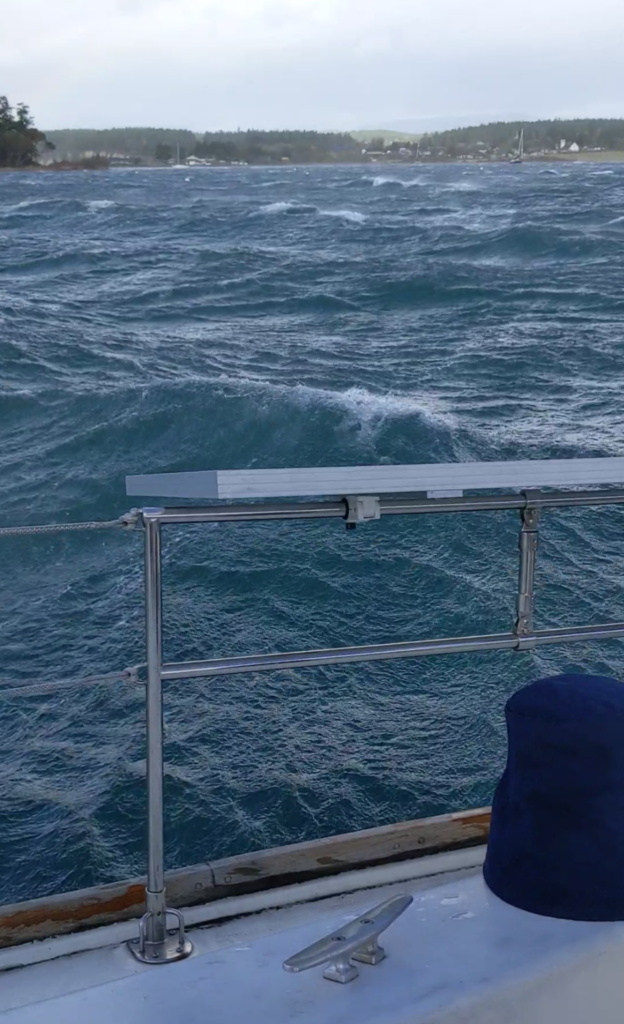
Situation Critical: Snapped Snubber Line!
Around the peak of the storm, our anchor’s snubber line snapped. For those of you not familiar with sailing (or boating in general), the snubber line is a strong but slightly stretchy rope tied from the anchor chain to the bow of the boat. Used properly, it should be long enough to provide lots of stretch during each gust of wind to work as a shock absorber between the anchor and the boat. That shock absorber prevents the boat from shock-loading the anchor during gusts of wind, which could cause the anchor to dislodge and come loose.
Thankfully, I noticed pretty quickly that the snubber had snapped. I’d been fretfully checking it all day as I knew that was the weakest point in our anchor setup. In preparation that morning, and for redundancy, Brenden had tied a short backup snubber on the opposite side of the bow. So when the primary snapped, thankfully that secondary snubber caught and held us until we could address the situation.
We donned our lifejackets and headed forward onto the violently pitching foredeck. Working carefully and as a team, we were able to first let out a bit more anchor chain, then let out the secondary snubber so that it was about 25 feet long as the primary had been, and then let out more chain so that it was loose and the snubber was once again holding the load. With that secondary snubber now acting as the new primary, we tied another backup in case we had another failure.
Seeing that the snubber line had snapped at the fairlead, the point where the line passes across the edge of the bow and bends to turn down toward the water, we could tell that the fairlead had proven to be a critical chafe point and had caused the failure. We used some heavy-duty canvas to secure around the snubber line to provide chafe protection for the rest of the storm. We should have done this from the start.
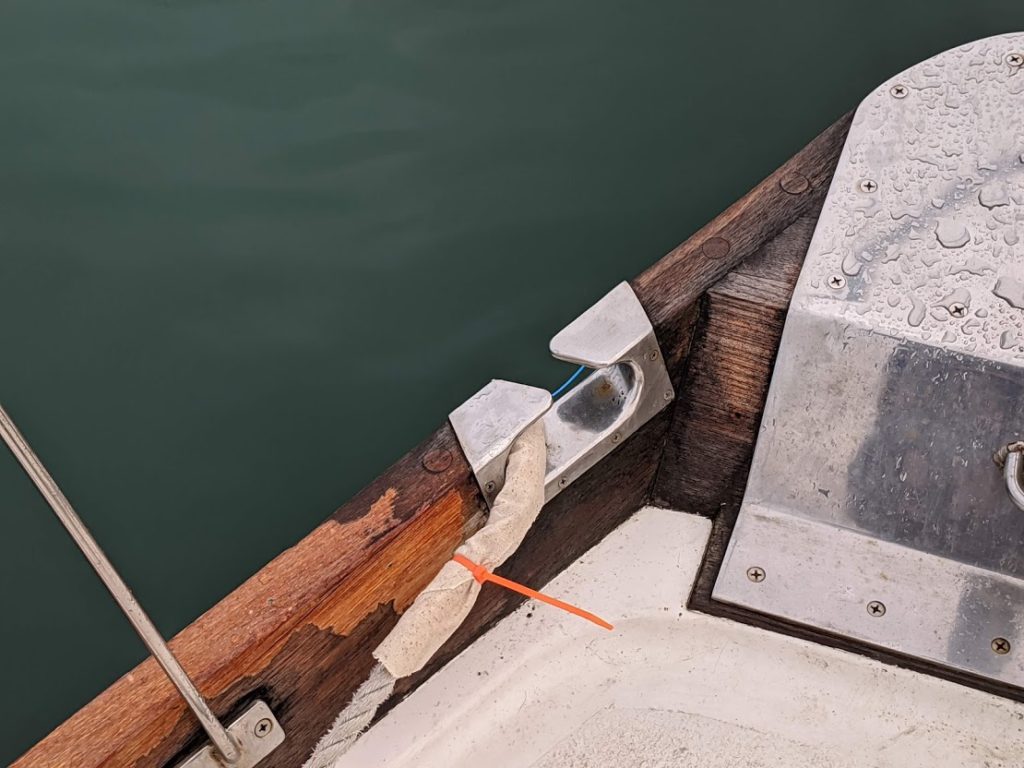
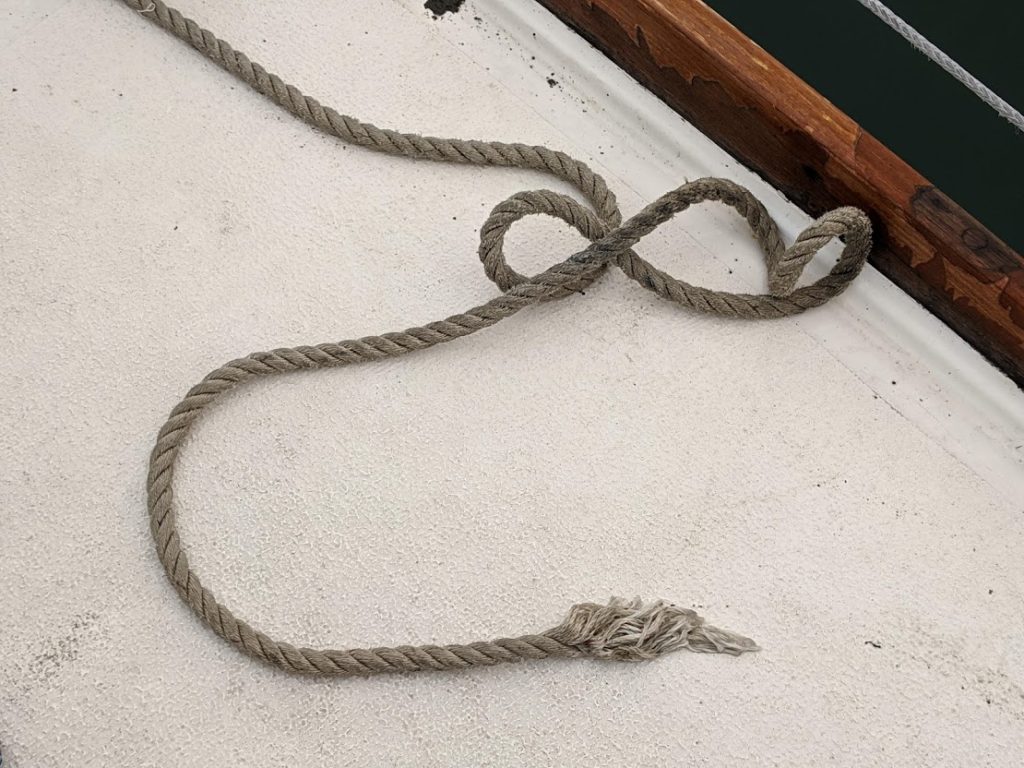
Thankfully, that was the worst of the drama for us. After the Great Snubber Replacement, we started to notice that the winds were calming. We went down below and started the process of decompressing. Talk about adrenaline crash. I started checking in with friends who knew our situation but darn if that wind didn’t grab hold of our already-very-shaken spirits and start kicking back up the violence.
I swear I felt like the storm held vengeance for us. Every time we started to even think that it was calming, or I mentioned that we were doing OK to a friend, the storm would pick back up and turn more violent again.
Finally. Thankfully. Right after sunset, it truly gave in and eased up on us. By 11:30pm, twelve hours from the onslaught, we felt comfortable enough to go to sleep.
I awoke to calm waters and have never been so glad for it. I will not take this for granted again.
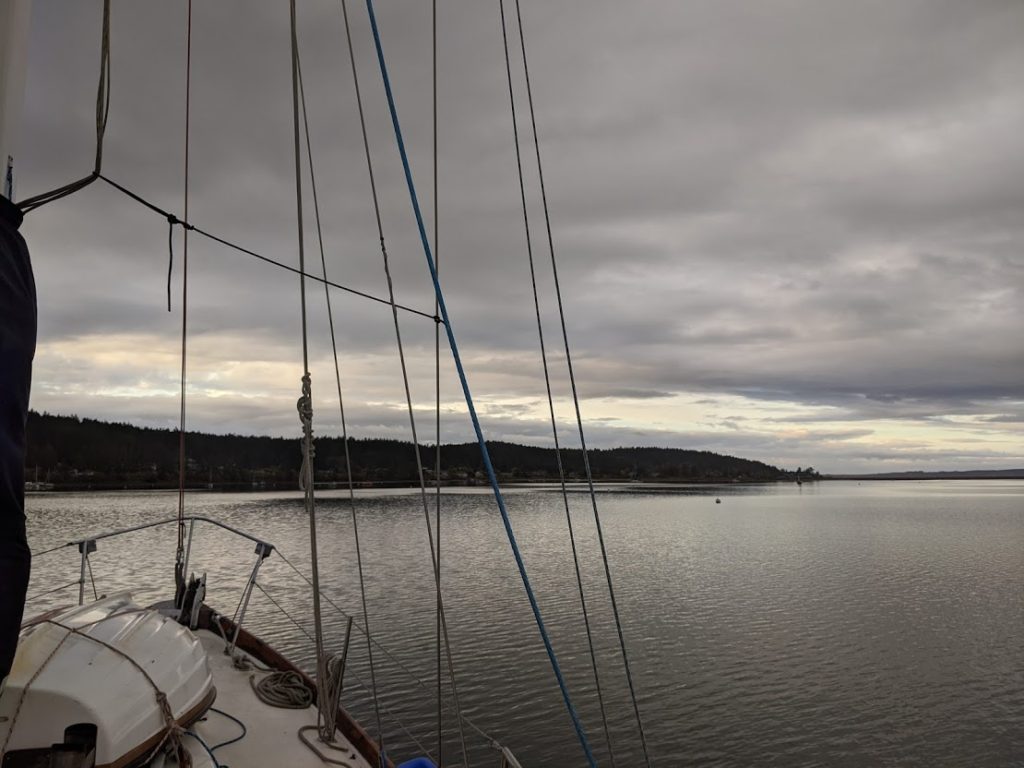
So many lessons learned. So so many lessons. We will be much more willing to duck into a marina in the future when the winds predicted top the 30-knot range.
I must give credit to our wonderful blue boat. She carried us through and earned a whole new notch of respect for sure. Also, of course, our wonderful 73lb Rocna anchor. Muah! Maybe I’ll give you a kiss when we dig you out of the mud in the morning. 😂
Tomorrow, we cross the Strait of Juan de Fuca headed for the south sound and winter moorage. We should have calm waters for the crossing and we’re ready for a break.
Below, I’ll pop in some pictures of our storm setup. Check it out and thanks for reading! ~Rachel
